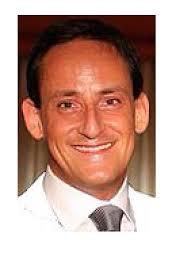Author Interviews, Heart Disease, JACC, Surgical Research / 23.11.2015
New TAVR System For Non-Calcified Aortic Valve Regurgitation
MedicalResearch.com Interview with:
Chunsheng Wang, MD
Department of Cardiovascular Surgery, Shanghai Cardiovascular Institution
and Zhongshan Hospital
Fudan University, Shanghai, China
Medical Research: What is the background for this study? What are the main findings?
Dr. Wang: Transcatheter aortic valve replacement (TAVR) has been widely used in high-risk patients for surgical aortic valve replacement. However, the majority of the TAVR devices were designed for aortic valve stenosis with significant valve calcification. For most of these devices, predominant aortic regurgitation remained to be a technological challenge because of questionable anchoring, which can result in a high incidence of valve migration and paravalvular leak. Consequently, the guidelines from the United States and the Europe suggest that candidates with predominant aortic regurgitation (>grade 3+) or noncalcified valve should not undergo TAVR. Patients with predominant aortic regurgitation who are at prohibitive risk for surgery need an alternative treatment. A new generation of transcatheter aortic valve devices with secure anchoring is needed.
Six patients with native aortic regurgitation without significant valve calcification (age, 61 to 83 years; mean age, 75.50±8.14 years) underwent transapical implantation of the J-Valve prosthesis (JieCheng Medical Technology Co.,Ltd., Suzhou, China), a self-expandable porcine valve. Implantations were successful in all patients. During the follow-up period (from 31 days to 186 days, mean follow-up was 110.00±77.944 days), only 1 patient had trivial prosthetic valve regurgitation, and none of these patients had paravalvular leak of more than mild grade. There were no major postoperative complications or mortality during the follow-up. Our study demonstrated the feasibility of transapical implantation of the J-Valve system in high-risk patients with predominant aortic regurgitation.
(more…)

 MedicalResearch.com Interview with:
Dr. Giuseppe Andò
University of Messina, Messina, Italy
Medical Research: What is the background for this study?
Dr. Andò: Patients’ preference for radial access for coronary angiography and percutaneous intervention is paralleled by an almost complete abolition of access-site bleeding. Given the deleterious impact of any clinically relevant bleeding event on short- and long-term outcomes, the use of radial access should translate into a reduction in net adverse events, especially in patients with high risk of bleeding such as those with an acute coronary syndrome. Nonetheless, studies conducted over the past decade by pioneers of
MedicalResearch.com Interview with:
Dr. Giuseppe Andò
University of Messina, Messina, Italy
Medical Research: What is the background for this study?
Dr. Andò: Patients’ preference for radial access for coronary angiography and percutaneous intervention is paralleled by an almost complete abolition of access-site bleeding. Given the deleterious impact of any clinically relevant bleeding event on short- and long-term outcomes, the use of radial access should translate into a reduction in net adverse events, especially in patients with high risk of bleeding such as those with an acute coronary syndrome. Nonetheless, studies conducted over the past decade by pioneers of 







